Navigating through the sea of warehouse management software can be overwhelming, considering there are over 100 different solutions in the market. Finding the right fit that aligns with your operational needs is crucial.
In fact, according to recent industry surveys, 65% of businesses struggle with selecting the most suitable software for their warehouse operations.
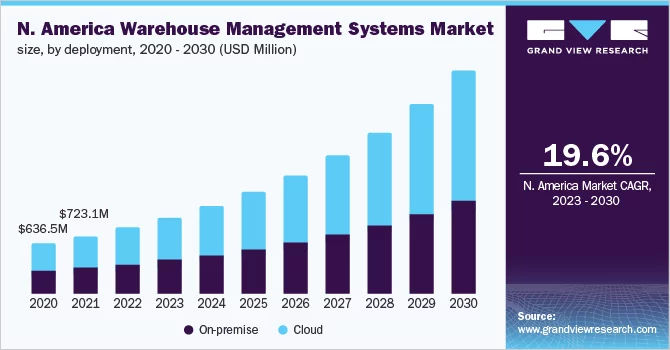
Source: Grand View
“Choosing the right warehouse management software is pivotal; it directly impacts your operational efficiency and customer satisfaction.”
Let us explore the historical progression of WMS, current technological advancements, and future trends shaping the industry.
What is Warehouse Management Software?

Warehouse management software is a digital tool designed to optimize warehouse operations. It manages inventory, tracks goods movement, and coordinates order processing and shipping. This software streamlines tasks like picking, packing, and restocking, and provides real-time data for better decision-making. The purpose is to enhance efficiency, reduce errors, and improve customer service, making warehouse operations more effective and responsive to market demands.
Top Warehouse Management Softwares:
1. Shipbob

ShipBob emerges as a cloud-based WMS that offers ecommerce enterprises an all-encompassing solution to handle inventory, orders, and fulfillment. With its network of fulfillment centers spanning the US, Canada, and Europe, ShipBob facilitates swift and cost-effective shipping to customers within these regions.
What Sets ShipBob Apart: ShipBob’s robust reporting and analytics capabilities furnish companies with easy tracking of their performance. Armed with real-time insights into inventory, order statuses, and shipping particulars, merchants optimize warehouse operations and craft informed strategies. The system churns out reports on pivotal metrics like order volume, fulfillment duration, and shipping expenses, enabling thorough performance analysis and pinpointing areas for enhancement.
ShipBob’s Features & Integrations:
Features encompass dashboards, data export/import, data visualization, external integrations, inventory tracking, multi-user functionality, notifications, product catalogs, shipping management, API access, and order management.
Integrations span a wide array including Shopify, Amazon, BigCommerce, Magento, Squarespace, Square, Walmart, Wix, and WooCommerce.
ShipBob’s Plans & Pricing:
ShipBob operates on a pricing model available upon request. You can solicit a free demo to explore their offerings firsthand.
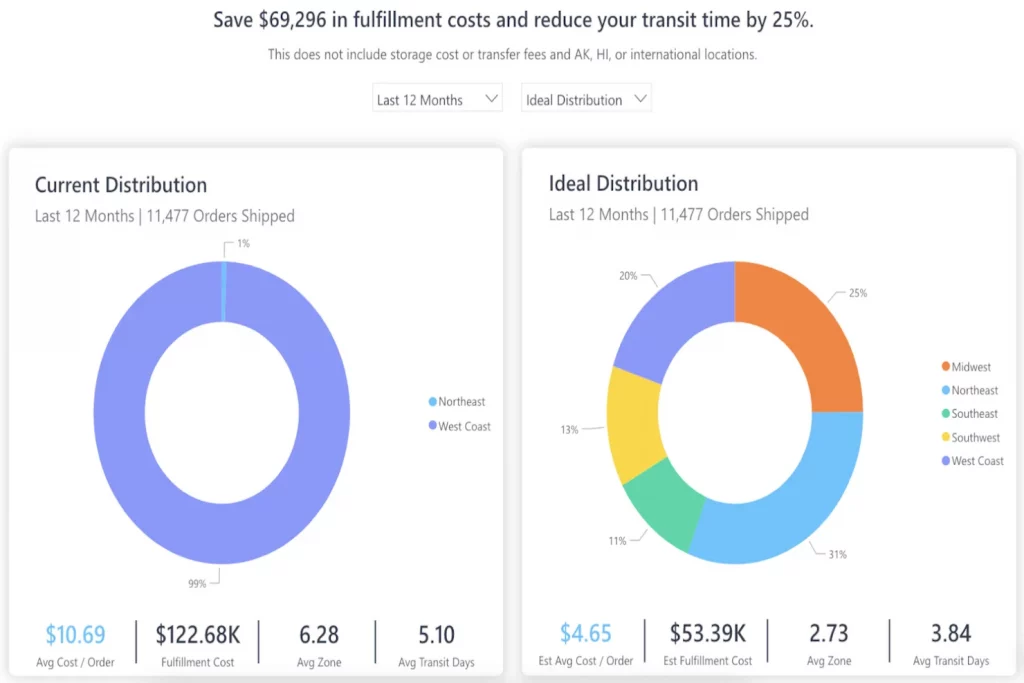
2. Linnworks

Linnworks, a cloud-based software, aids sellers in inventory management and automating order fulfillment across multiple sales channels. It eliminates manual data entry, streamlining picking, packing, and shipping processes. Its key features encompass centralized inventory management, order tracking, and automation.
Why Choose Linnworks: Compatible with various marketplaces and courier services, Linnworks offers real-time inventory tracking, alerts for low stocks, and generates insightful reports for data-driven decisions. Users benefit from managing stock levels through real-time updates, automated price adjustments, and convenient stock notifications. Additionally, Linnworks seamlessly integrates sales channels like online stores, marketplaces, and shipping carriers, ensuring unified data flow from a central hub.
Sellers can create shipping labels, generate packing slips, and update order statuses automatically. Linnworks simplifies shipping by offering multiple carrier options like Royal Mail, DPD, and UPS. Its robust reporting and analytics tools enable performance tracking, granting access to orders, inventory, and sales data across diverse channels. Customizable dashboards and detailed reports aid in tracking key metrics, pinpointing operational hurdles, and predicting future trends.
Linnworks Features & Integrations:
Noteworthy features include APIs, dashboards, data export/import, data visualization, external integrations, forecasting, inventory tracking, multi-user access, notifications, supplier management, product catalog, shipping management, order management, status notifications, and warehouse management.
Integrations span Amazon, Magento, eBay, Shopify, BigCommerce, Walmart, Buy on Google, Wish, TikTok Shops, WooCommerce, Quickbooks, Gorgias, Payoneer, and more.
Linnworks Pricing & Plans:
Linnworks offers pricing upon request and provides a free demo for interested users.
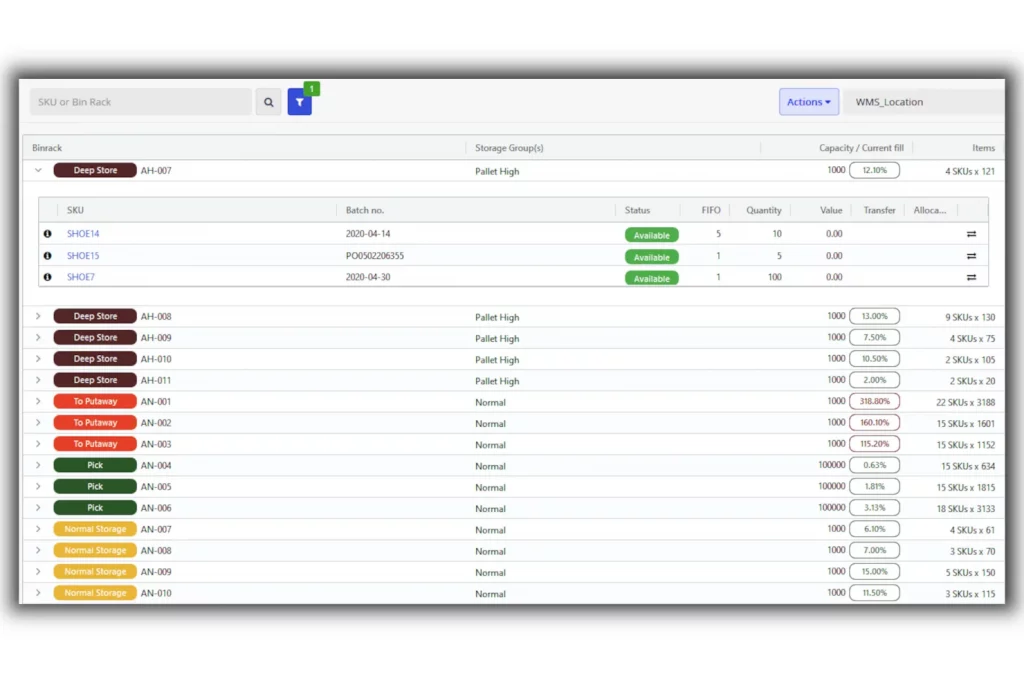
Learn about inventory management challenges here.
3. SkuVault

SkuVault stands as an eCommerce inventory management software designed to streamline channel connections, warehouse organization, and inventory management.
Reasons for Choosing SkuVault: SkuVault’s notable strength lies in its wide array of ready-to-use integrations, aiding in seamless system connectivity. Additionally, its customer-centric approach shines through its pick, pack, and ship functionalities, ensuring timely order fulfillment.
Supporting this customer-oriented approach are features like interactive wave picking, holds, daily deals, flash sales, print-to-order, and HyperPicking, a tool providing precise guidance on fulfilling orders efficiently.
SkuVault’s Features & Integrations:
Key features encompass inventory forecasting, real-time data synchronization, inventory picking, quality control, advanced analytics, and warehouse insights.
SkuVault integrates with a comprehensive list of platforms including 3dcart, Amazon, Big Commerce, eBay, Etsy, Magento, Quickbooks, Salesforce, Shopify, WooCommerce, and many others.
SkuVault Plans & Pricing:
Starting at $329 per month, SkuVault offers various pricing tiers and provides a free demo for interested users.
4. Netsuite

NetSuite represents a cloud-based ERP business software solution that consolidates financial, cash flow, payroll, and inventory functionalities into a unified tool, granting users comprehensive oversight and control of their business operations.
Why Opt for NetSuite: NetSuite adopts industry-leading practices such as task management, cycle count plans, RF barcode scanning, and tailored strategies for picking and storage. Additionally, its mobile version empowers warehouse staff to undertake activities like receiving, shipping, picking items, and storage prompts seamlessly.
Moreover, the system seamlessly integrates with inventory, order fulfillment, and manufacturing systems, ensuring real-time information updates throughout the company.
NetSuite’s Features & Integrations:
Key features encompass inventory visibility, analytics tracking fill rates and accuracy, inbound logistics, order fulfillment, mobile warehouse management, bin management, and cycle counts.
NetSuite integrates with various platforms including Oracle, JD Edwards EnterpriseOne, Sage Business, Affirm, NetSuite CRM, Lightyear, ZoneBilling, Neuron ESB, and Pacejet.
NetSuite Plans & Pricing:
Pricing details are available upon request, where you’ll need to acquire both the NetSuite core platform and the WMS module. Oracle offers a free product tour for interested parties.
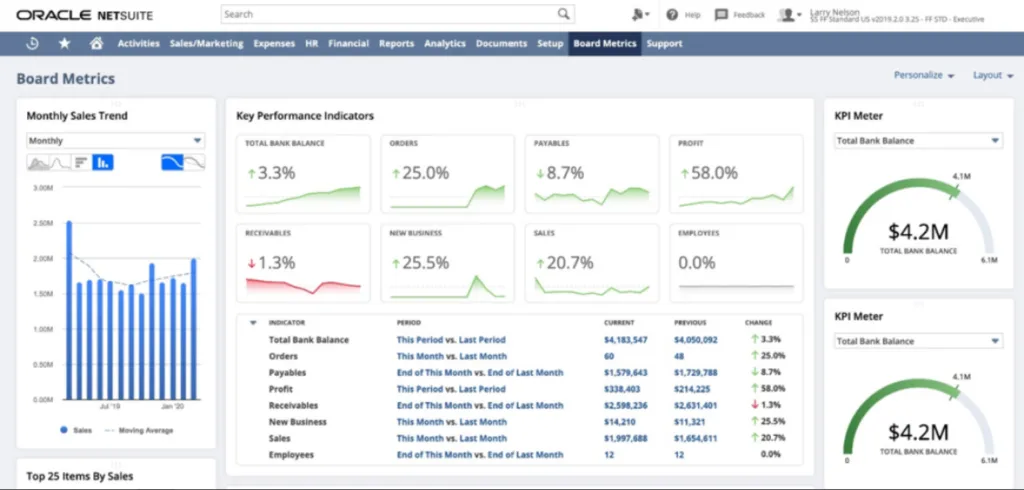
5. Cin7 Core

Cin7 Core specializes in efficient inventory management within ecommerce. Focused on essential inventory aspects, it enables businesses to monitor and control inventory effectively, enhancing operational efficiency and cost savings.
Why Cin7 Core Stands Out: It excels with barcode scanning, pick-and-pack workflows, and inventory tracking, optimizing warehouse operations, enhancing order accuracy, and reducing picking errors. Its warehouse management capabilities merge shipping and backend warehouse functions for unified order processing.
Additionally, it offers tools like point of sale, B2B portals, and robust reporting, presenting a comprehensive business solution.
Cin7 Core’s Features & Integrations:
Noteworthy features include a dedicated warehouse management mobile app, guided walk paths, and wave-based picking to streamline fulfillment processes and reduce time wastage.
Integrations cover accounting software, Shopify, Quickbooks, Amazon, Xero, and developer APIs for custom integrations. It also scales with 3PL and EDI systems for expanded needs.
Cin7 Core Plans & Pricing:
With 4 pricing tiers starting at $349 per month, Cin7 Core offers a 14-day free trial accessible through their website.
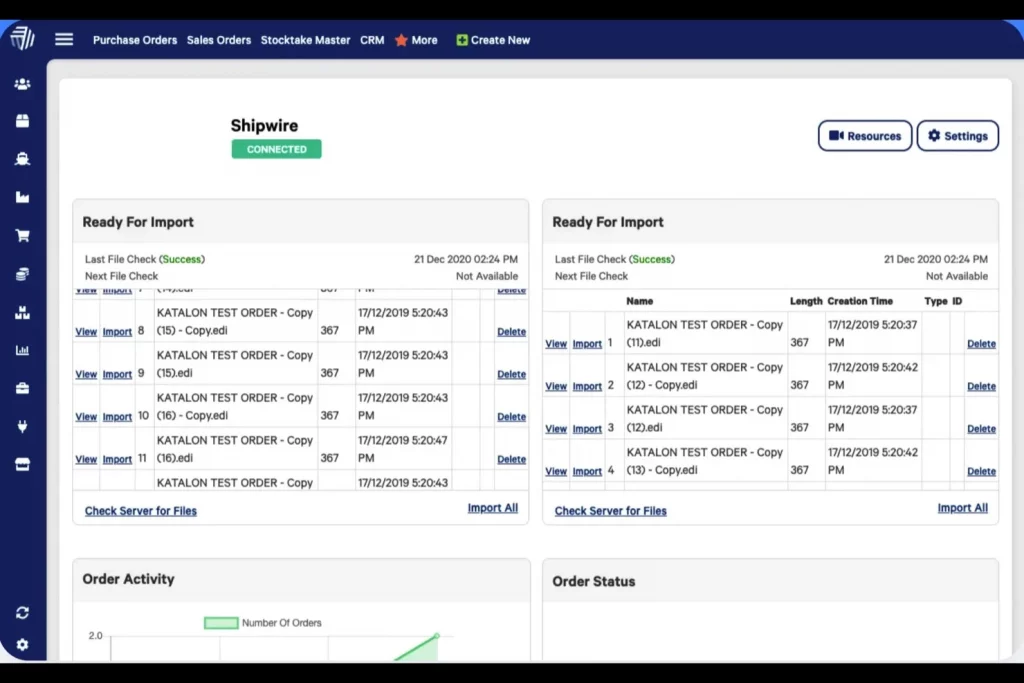
6. ShipStation

ShipStation, an ecommerce shipping solution, offers a suite of features to streamline and manage shipping processes for businesses.
Why I Chose ShipStation: Amidst various options, ShipStation stood out for its efficiency in streamlining ecommerce shipping. It provides access to discounted rates from major carriers like USPS, UPS, FedEx, and DHL. With tools for batch order creation, automated actions, and real-time tracking, it ensures swift order fulfillment. Its branding services, inventory tools, and integrations with marketplaces and shopping carts make it a comprehensive shipping solution.
ShipStation’s Features & Integrations:
Key features encompass automation, enabling task automation and batch order processing for increased efficiency. Automation rules allow for shipping setting applications, tagging, and notifications. Batching enables simultaneous processing of multiple orders, saving time.
It integrates with over 300 platforms, including Squarespace, Ebay, Walmart, Shopify, Etsy, Wix, Klaviyo, Square, bigcartel, Quickbooks, and Morecommerce.
ShipStation Plans & Pricing:
ShipStation offers various plans starting at $9.99 per month.
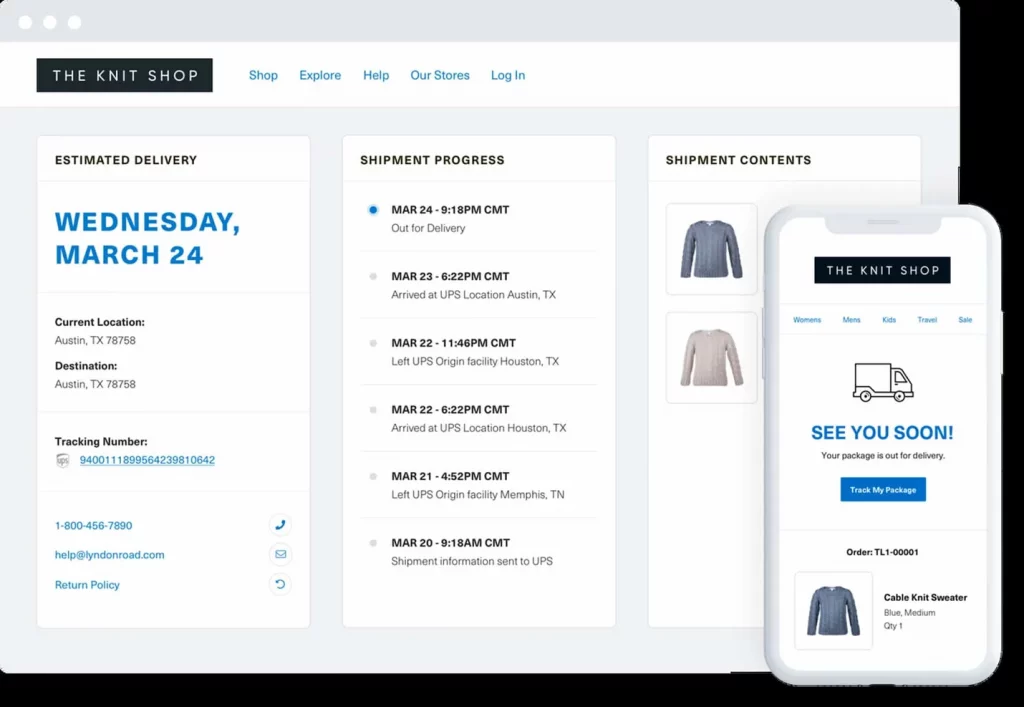
7. PULPO WMS

PULPO WMS is a cloud-based warehouse management system granting businesses real-time oversight and command over their inventory and logistics operations.
Why I Chose PULPO WMS: PULPO WMS revolutionizes ecommerce warehouse management by providing a centralized platform for optimizing warehouse operations. It ensures real-time inventory tracking, efficient order fulfillment, and streamlined shipping and receiving management, facilitating on-time order completion. Its advanced reporting and analytics tools aid in trend identification and inventory level optimization, mitigating risks of overstocking or stockouts. Seamless integrations with top ecommerce platforms and shipping carriers automate order fulfillment, streamline operations, and enhance customer experiences.
PULPO WMS stands out with its user-friendly, customizable system offering real-time inventory tracking, advanced reporting, and integrations with leading ecommerce platforms and shipping carriers. Customers praise its excellent customer support and highly rated training resources for their responsiveness and expertise.
PULPO WMS Features & Integrations:
Features cover inventory tracking, optimization, order fulfillment, shipping & receiving, barcode scanning, label printing, reporting & analytics, customizable workflows, user permissions, third-party integrations, mobile accessibility, multi-location support, customer support, and training resources.
Integrations span Shopify, WooCommerce, Magento, Sendcloud, Odoo, and others.
PULPO WMS Plans & Pricing:
Pricing details are available upon request, with the option to book a free demo or take a product tour on PULPO’s website.
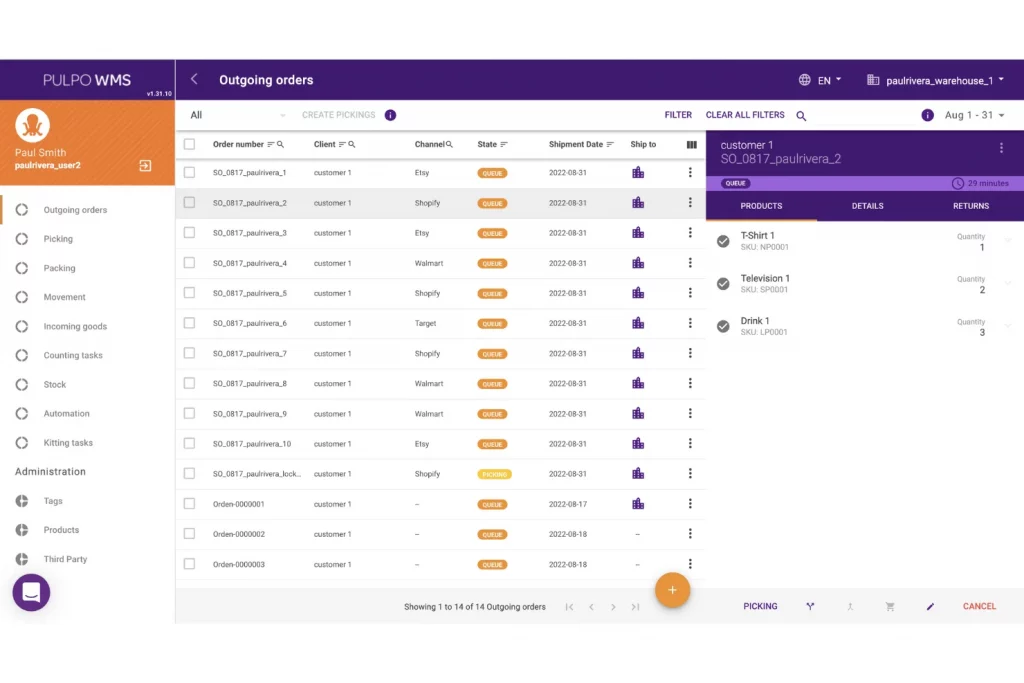
8. Manhattan Associates

Manhattan Active stands as a warehouse management system designed to dynamically adjust to your business requirements automatically.
Why I Chose Manhattan: Manhattan’s WCS (Warehouse Control System) excels in optimizing fulfillment and throughput for WAVE and WAVELESS order processing within one unified platform. It streamlines receiving and shipping, facilitating cross-docking and expediting back-ordered products.
Manhattan’s WCS showcases strengths in several areas, including offering a dedicated WMS team capable of scripting from SQL Server. Its user-friendly environment is notably easy to grasp.
Manhattan’s Features & Integrations:
Key features encompass labor management, slotting optimization, transportation management, order streaming, facility-wide actionable insights, and employee engagement through gamification.
Integrations: Unfortunately, Manhattan WMS does not list any integrations on their website. The absence of specified integrations or connections through a marketplace poses a significant limitation for this software.
Manhattan Plans & Pricing:
Pricing details are available upon request, and interested users can schedule a one-on-one demo.
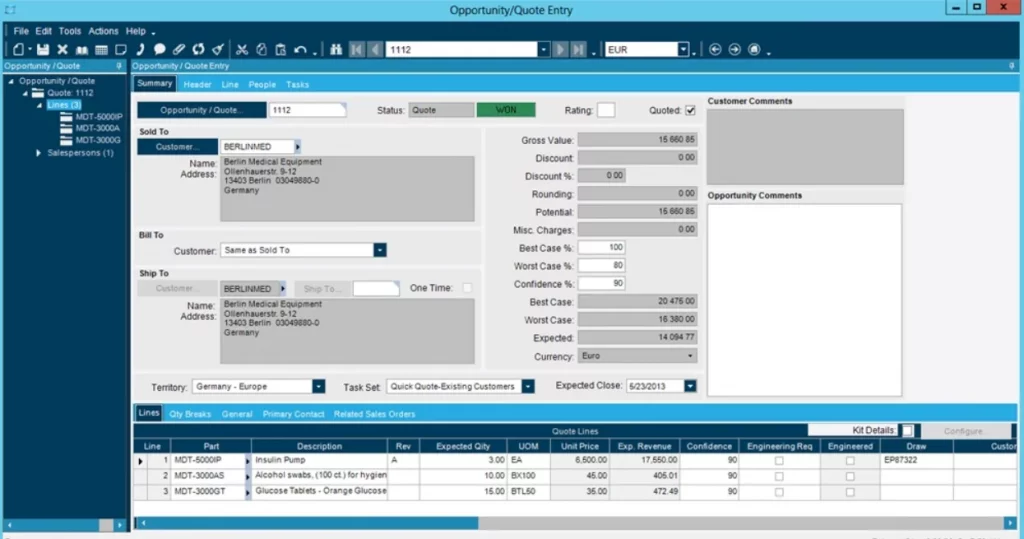
9. Infoplus

Infoplus emerges as warehouse management software crafted by seasoned fulfillment experts.
Why I Chose Infoplus: Infoplus stands as a comprehensive WMS solution encompassing inbound and purchasing, outbound and shipping, inventory control, custom reporting, dashboards, management by exception, low stock and control measures, customer portal, and real-time order and shipment tracking.
Moreover, it offers additional modules to support light manufacturing, centralized operations integrating WMS, finances, accounting, and AI-driven operational insights.
Infoplus Features & Integrations:
Key features include automated routing, optimal layout, real-time inventory insights, low stock alerts, restocking rules, replenishment planning, process optimization recommendations, and reporting.
It integrates with over 120 connections covering carts, carriers, EDI, and big box retail, including Amazon Seller Central, Etsy, Cratejoy, HSN, Walmart Marketplace, Walmart DSV (Drop Ship Vendor), and ChannelAdvisor.
Infoplus Plans & Pricing:
Pricing details are available upon request.
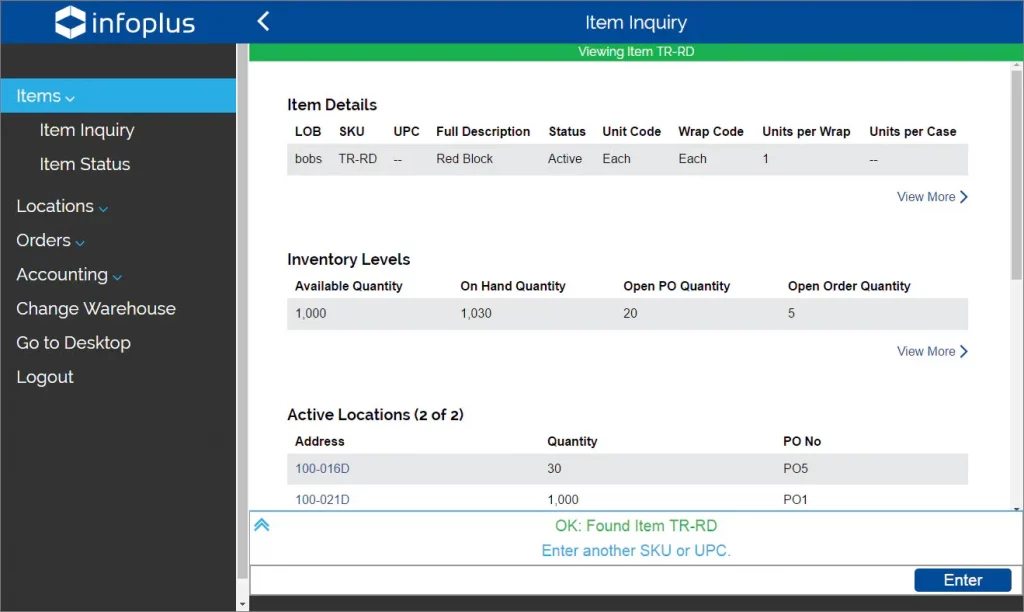
10. Hopstack

Hopstack offers a comprehensive warehousing platform integrating warehouse management, order fulfillment, multi-channel order management, and shipping and dispatch tools.
Why I Chose Hopstack: Its warehouse management features cover essential aspects, ensuring streamlined operations. Automated replenishment for low stock levels and simplified warehousing through managed putaway processes are notable. It also facilitates synchronized inventory data and management across multiple warehouses for updated and organized records.
Especially suitable for 3PL companies (or those relying on them), Hopstack allows guided workflows for efficient warehousing and order fulfillment tasks. Multiple profiles can be set up for 3PL companies or to manage distinct channels separately.
Hopstack’s Features & Integrations:
Notable features encompass multi-channel management, customized workflows, automated replenishment, inventory synchronization, returns management, real-time reporting, and shipping and dispatch logistics.
Integrations span across platforms like Amazon, BigCommerce, eBay, Etsy, DHL, FedEx, Magento, Microsoft Dynamics 365, NetSuite, Purolator, SAP, Salesforce, and numerous others.
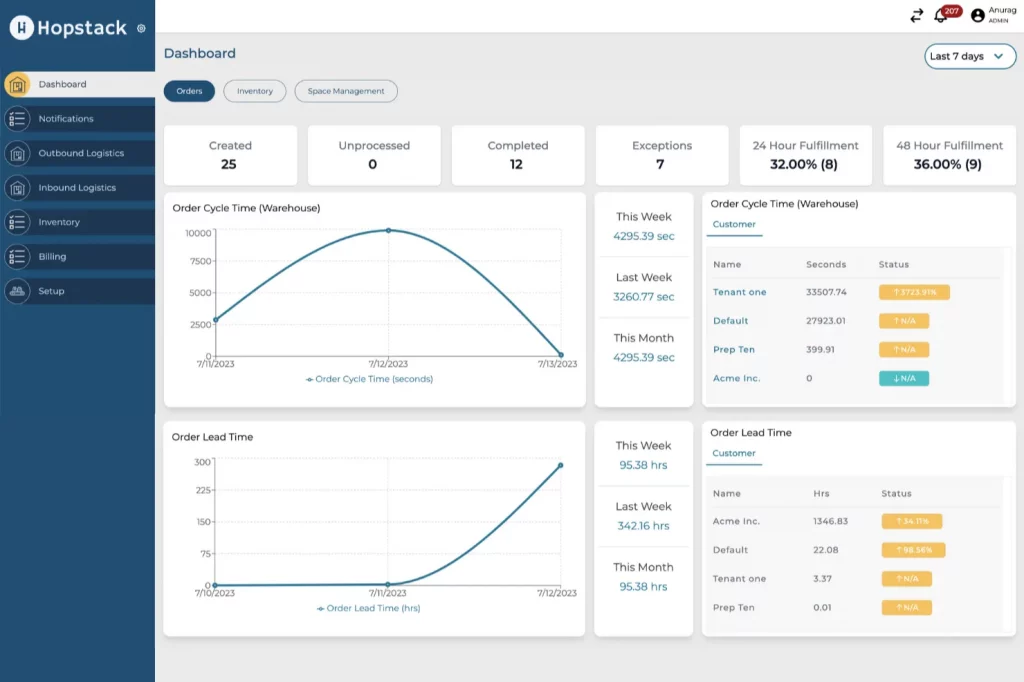
Factors to Consider Before Choosing a Warehouse Management Software:
- Essential Functions:
- Receiving and Storage: Capability to handle incoming goods, monitor inventory movement, and track stock levels.
- Ecommerce Integration: Connection with popular platforms like Shopify, BigCommerce, and WooCommerce.
- Workflow Management: Automating warehousing processes such as putaway, slotting, and cycle counting.
- Order Fulfillment: Generating pick lists, managing distributors, shipping orders, handling multiple sales channels, and purchase order management.
- Multi-location Management: Ability to oversee multiple warehouses and manage stock across different locations.
- Labor Management: Creating checklists, task assignments, and setting standards for efficient workforce performance.
- Analytics and Reporting: Dashboards for performance monitoring, stock levels, and predictive insights like forecasting.
- Usability:
A user-friendly Warehouse Management System (WMS) fosters accurate task execution and operational efficiency. Intuitive interfaces enhance employee productivity, while complex systems can lead to errors and delays. I prioritized platforms with clear, navigable modules for swift comprehension.
- Integrations:
Compatibility with other SaaS platforms and applications streamlines processes and reduces complexity. I sought WMS software that integrates seamlessly with leading ecommerce platforms like Shopify, BigCommerce, as well as sales channels such as eBay, Etsy, and Amazon. Additionally, I looked for integration with ERP systems like Oracle NetSuite and SAP.
- Legal & Compliance:
Consideration of legal and compliance aspects, including adherence to regional and industry-specific regulations for data handling, storage, and protection. I emphasized software that facilitates compliance with shipping and trade laws, particularly for international operations.
- Pricing:
The pricing spectrum varies widely, with some starting at $30 per user per month and others at higher flat rates. Custom pricing options cater to diverse business needs, preventing payment for unnecessary features or missing critical functionalities. Each overview includes pricing details for better assessment.
Conclusion:
Warehouse management software plays a pivotal role in optimizing inventory operations, streamlining processes, and enhancing overall efficiency for businesses of all sizes. With a myriad of options available, choosing the right software involves careful consideration of various factors, including core functionalities, integrations, user-friendliness, and pricing.
By leveraging warehouse management software, businesses can achieve better inventory control, smoother order fulfillment, improved accuracy, and real-time insights into warehouse operations. The integration of analytics, automation, and reporting tools empowers businesses to make data-driven decisions, thus enhancing productivity and customer satisfaction.
FAQs on Warehouse Management Software:
Can warehouse management software help in reducing errors in order fulfillment?
Yes, WMS is designed to minimize errors in order fulfillment. It uses automation, barcode scanning, and real-time inventory tracking to reduce picking errors, ensure accurate order fulfillment, and maintain inventory accuracy.
Can warehouse management software integrate with existing business systems?
Yes, modern WMS solutions are often designed to integrate seamlessly with various business systems such as Enterprise Resource Planning (ERP) software, Customer Relationship Management (CRM) tools, eCommerce platforms, shipping carriers, and accounting software.
Does warehouse management software offer mobile accessibility?
Many warehouse management solutions provide mobile applications or web-based interfaces that enable users to access and manage warehouse operations from mobile devices. This feature allows for greater flexibility and real-time monitoring, even when away from the warehouse.
How does warehouse management software handle returns and reverse logistics?
Some WMS systems include features for managing returns and reverse logistics processes. These functionalities often involve streamlined return processing, restocking inventory, and integrating returned items back into available stock.



